August 1, 2016
I’ve written three perfectly good starting paragraphs for this post in the last fifteen minutes, and none of them feel right.
I try to write about what I knew of Titanic before today, and what I know now. It all sounds so cerebral, when what I really want to do is show you, not tell you.
Maybe, instead of writing about what I know, I should start with my first impressions.
My first impression of Titanic Belfast, the world’s largest Titanic exhibit, is that it’s incredibly ugly.
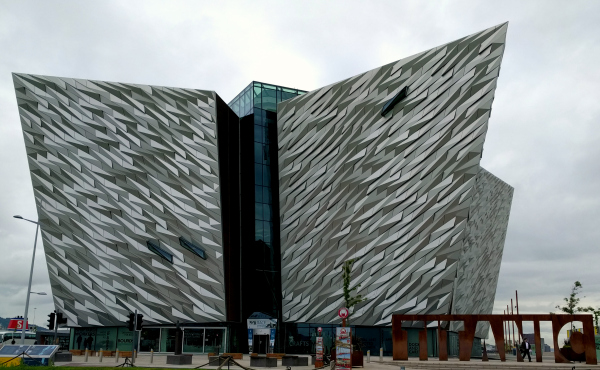
The building sits alone on its pier, the River Lagan on its left and a very modern, minimalist complex of apartments and offices on its right.
There are benches around its plaza, some square, some rectangular. There seems to be no pattern to their placement, and no reason for the pools of water between the benches and the building.
It is only during a guided Discovery tour that I understand, and then become seriously impressed by, the symbolism that has gone into the building’s design.
The building is 126 feet (38 m) high, the same height as Titanic’s hull. It’s an odd shape, with jutting angles to remind me of a ship’s prow and 3,000 individual silver anodized aluminum shards to evoke ocean waves.
The building’s four entrances are perfectly aligned with the four cardinal directions. And those benches that appear in random order? They’re actually physical representations of the SOS Morse Code that Titanic sent out the night she sank.
Opposite the main entrance are the very slipways where Harland & Wolff built Titanic and her sister ship Olympic.
The outlines of both ships are traced in silver bands along the pale grey concrete. Poles on each side mark where the gantries would have stood. Platforms edged with glass plates contain the names of those who did not survive Titanic’s maiden voyage.
Olympic’s slipway contains a memorial garden for Titanic. The green grass bands represent the number of passenger lives lost in first, second, and third class. The brown wooden walkways between them represent the crew.
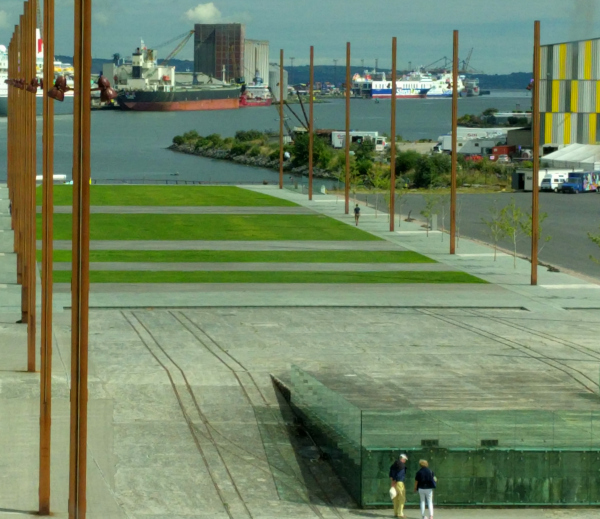
Next to the memorial garden, Titanic’s slipway contains a series of benches, placed exactly where they would have been on the first class promenade deck. A series of ovals outline where the lifeboats were stored.
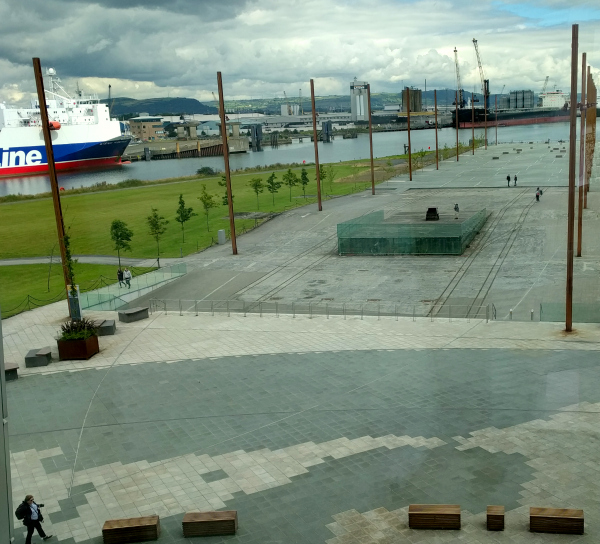
There are no signs to explain these things, no eloquent plaques or moving videos or tales from survivors. All of those are inside. Out here, where Titanic took shape, there’s just enough to allow my imagination to bring Titantic to life.
I can see her being built, can imagine standing at ground level when her hull reaches the same height as the building. I see her setting sail, slowly and triumphantly, thousands of people waving and cheering her on. I feel the excitement of being a passenger, the thrill of her designers as the most advanced ship in the world puts out to sea. What a thrill it would be to go back in time and be part of that moment!
Just east of the exhibit hall lies the building where Titanic’s designs where drawn, redrawn, corrected, and copied. It’s not open to the public, but my guide talks about having to use natural light, and the painstaking work that went into drawing each aspect of the ship by hand.
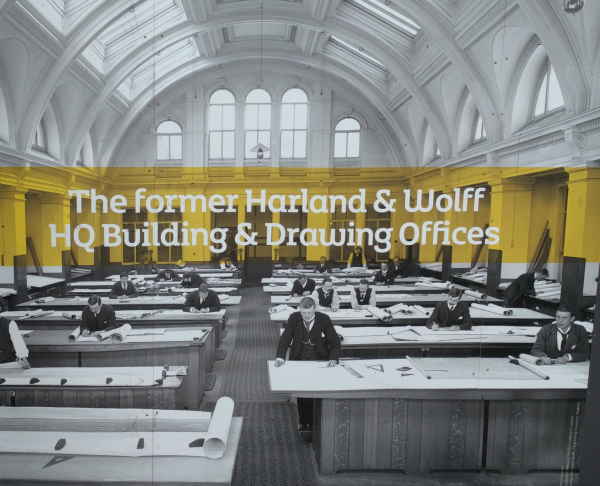
Further east and slightly north are Samson and Goliath, Harland & Wolff’s iconic cranes built in the early 1970s.
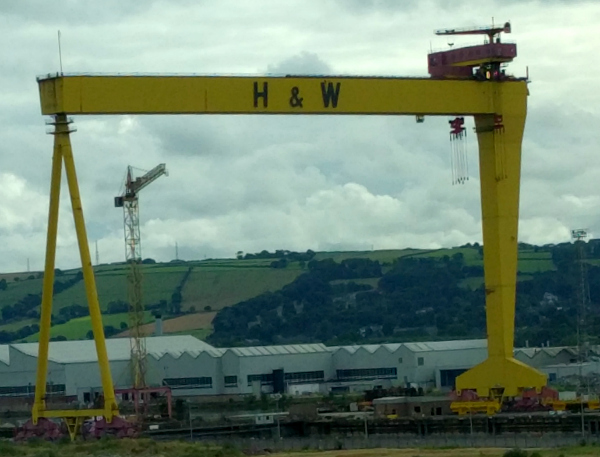
Over 300 feet tall, they dominate the east Belfast skyline. Even though they were built fifty years after Titanic, it is fitting that they remain a visible reminder of the company who built her.
Inside the Titanic Experience, the history of this ship and the city who built her are laid out in a series of interactive galleries. In floor-to-ceiling drawings, paintings, information signs, and computer displays, the pride Belfast takes in its mighty industrial past is evident.
The first gallery is entirely devoted to Belfast at the turn of the 20th century, the second to the shipyard itself. Stories of Belfast’s important industries and the lives of its working citizens are interwoven with stories about Harland & Wolff and the White Star line.
The shipyard gallery includes an elevator ride part-way up a reconstructed Arrol gantry (built especially for Titanic and Olympic) and a ride aboard a mini-car that goes up and around Titanic’s rudder.
In panel after panel, the massive amount of man hours that went into designing and building the Titanic are brought to life. There’s a computer simulation game of tapping in the rivets needed to hold Titanic together, and a detailed description of the 5-man riveter team who did the work in real life.
When I enter the third gallery, Titanic is ready for her launch. In the fourth gallery, she comes to life as I have seen her on the big screen.
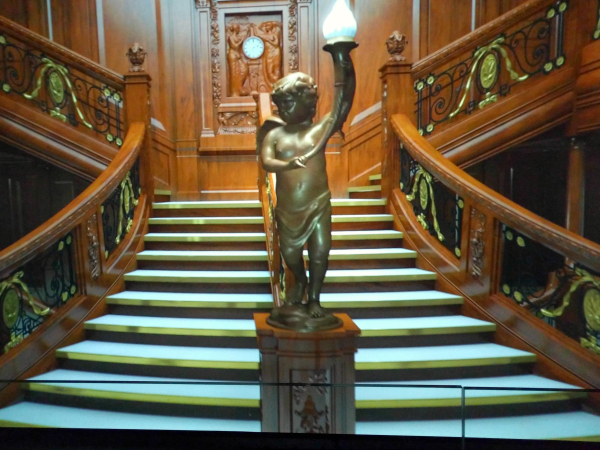
I wander from exhibit to exhibit, taking in the supplies presentation in one corner, and the models of the different class cabins that dominate the center of the room.
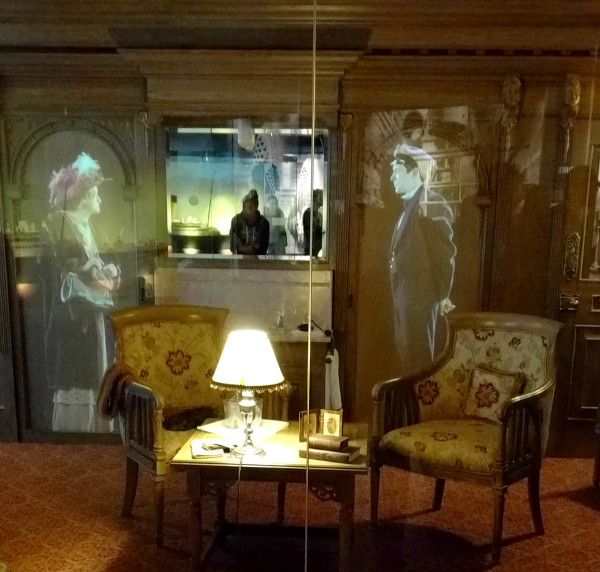
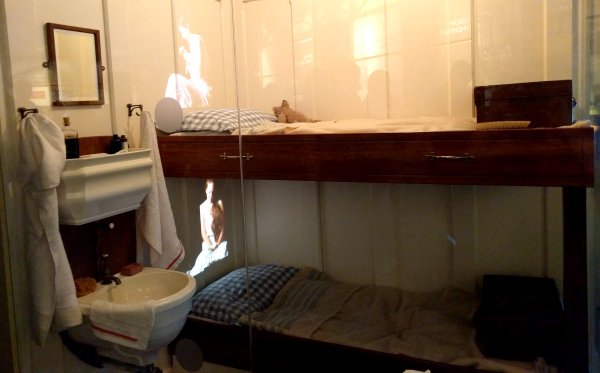
One corner of the gallery houses a walk-in surround theatre, with screens on three sides and room for maybe 30 people to stand in the middle.
I enter just as the 3D tour begins. Within seconds I forget that I am standing in a darkened room a hundred years after Titanic was built.
From engine room,
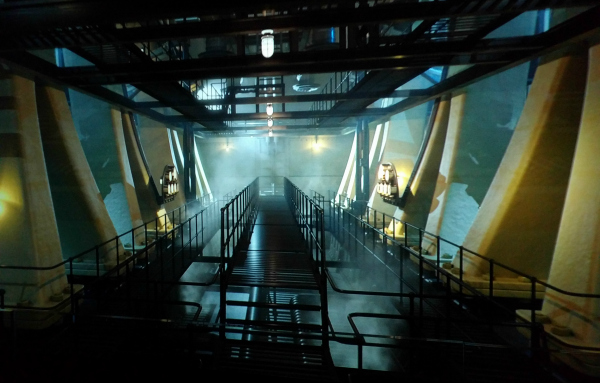
to hallways,
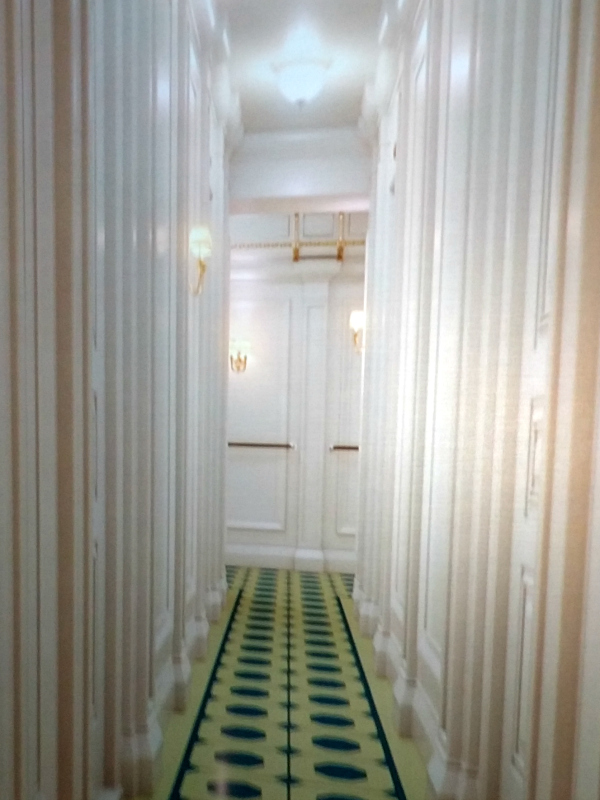
to dining room,
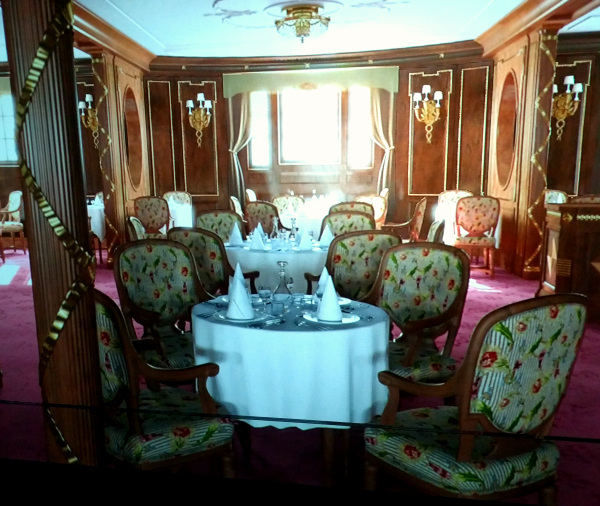
and up to the bridge, this is how Titanic looked to the people who built, lived, and worked on her.
There are no voices, no narrations, no descriptions or explanations of what I’m seeing. Just the chug chug chug of the engine room, and soft instrumental music for the rest.
I move quickly through the next gallery, as if unable to take in any more stories about the passengers and crew who boarded Titanic with such high hopes.
When I enter the gallery devoted to Titanic’s sinking, I walk in to the middle of a first-hand account from a survivor. The gallery is dark, with red SOS Morse Code running along the top of the room. There are panels describing the sequence of events, and more panels with pictures of newspapers reporting the tragedy.
Most people in the gallery are simply standing, listening – as I am – to the first-hand survivor accounts that are playing over the gallery’s speakers. Their descriptions of the sinking and being rescued are straightforward and evocative.
The next gallery covers the inquiries that made after the tragedy, and the fallout to various key players. I read it all, but am having trouble taking it in. I am stuck somewhere between Titanic as she appeared in the 3D tour and the voices of those survivors.
Incredibly, I have forgotten about Dr. Robert Ballard’s discovery of Titanic until I enter the last gallery. It’s a theatre, with rows and rows of grey seats and a floor to ceiling screen. And there, on the screen, is the famous image of the green-encrusted prow at the bottom of the ocean.
Two men narrate the video as the underwater camera moves about Titanic’s resting place. It’s my first time seeing these images on a big screen, and the impact holds me motionless in my seat.
I’m not the only one. There are dozens of children watching this with their parents, and no one is making a sound. I suddenly realize that no one made a sound during the 3D tour, either. It seems that Titanic’s story has touched us all.
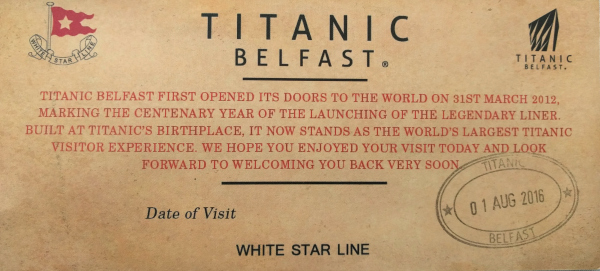
I think about that as I brave the gift shop to purchase Walter Lord’s A Night to Remember and a Titanic ornament. I think about it as I pass the SS Nomadic, one of Titanic’s tender ships and the last surviving White Star vessel, on my way out. I think about it as I immerse myself in Lord’s book for the entire 3 hour bus ride back to Dublin.
It seems to me that Titanic holds the same fascination as the Challenger explosion in 1986. Both were marvels of modern engineering. Both were designed to the best of their builders’ abilities, and both pushed the envelope of what was possible.
And both live on in our collective memory, a testament to our drive to master our world, and a reminder that tragedy can occur at any moment.
Up next: A relaxing weekend and a reunion in Edinburgh!

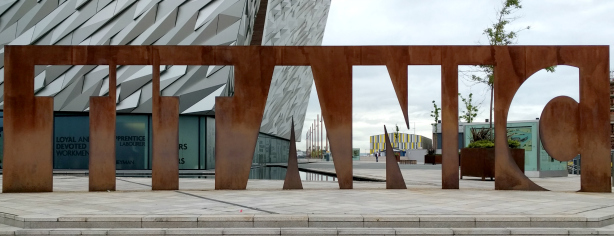









Leave a Reply